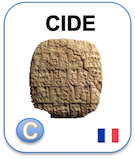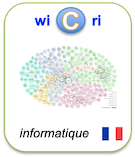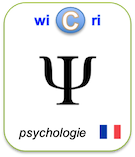A multisensory approach to spatial updating: the case of mental rotations
Identifieur interne : 004302 ( Main/Exploration ); précédent : 004301; suivant : 004303A multisensory approach to spatial updating: the case of mental rotations
Auteurs : Manuel Vidal [Allemagne, France] ; Alexandre Lehmann [France] ; Heinrich H. Bülthoff [Allemagne]Source :
- Experimental Brain Research. Experimentelle Hirnforschung. Experimentation Cerebrale [ 0014-4819 ] ; 2009.
Abstract
Mental rotation is the capacity to predict the outcome of spatial relationships after a change in viewpoint. These changes arise either from the rotation of the test object array or from the rotation of the observer. Previous studies showed that the cognitive cost of mental rotations is reduced when viewpoint changes result from the observer’s motion, which was explained by the spatial updating mechanism involved during self-motion. However, little is known about how various sensory cues available might contribute to the updating performance. We used a Virtual Reality setup in a series of experiments to investigate table-top mental rotations under different combinations of modalities among vision, body and audition. We found that mental rotation performance gradually improved when adding sensory cues to the moving observer (from
Url:
DOI: 10.1007/s00221-009-1892-4
PubMed: 19544058
PubMed Central: 2708330
Affiliations:
Links toward previous steps (curation, corpus...)
- to stream Pmc, to step Corpus: 000B96
- to stream Pmc, to step Curation: 000B96
- to stream Pmc, to step Checkpoint: 002215
- to stream Ncbi, to step Merge: 001175
- to stream Ncbi, to step Curation: 001175
- to stream Ncbi, to step Checkpoint: 001175
- to stream Main, to step Merge: 004384
- to stream Main, to step Curation: 004302
Le document en format XML
<record><TEI><teiHeader><fileDesc><titleStmt><title xml:lang="en">A multisensory approach to spatial updating: the case of mental rotations</title><author><name sortKey="Vidal, Manuel" sort="Vidal, Manuel" uniqKey="Vidal M" first="Manuel" last="Vidal">Manuel Vidal</name><affiliation wicri:level="3"><nlm:aff id="Aff1">Max Planck Institute for Biological Cybernetics, Tübingen, Germany</nlm:aff><country xml:lang="fr">Allemagne</country><wicri:regionArea>Max Planck Institute for Biological Cybernetics, Tübingen</wicri:regionArea><placeName><region type="land" nuts="1">Bade-Wurtemberg</region><region type="district" nuts="2">District de Tübingen</region><settlement type="city">Tübingen</settlement></placeName></affiliation><affiliation wicri:level="1"><nlm:aff id="Aff2">LPPA, CNRS, Collège de France, Paris, France</nlm:aff><country xml:lang="fr">France</country><wicri:regionArea>LPPA, CNRS, Collège de France, Paris</wicri:regionArea><placeName><settlement type="city">Paris</settlement></placeName></affiliation></author><author><name sortKey="Lehmann, Alexandre" sort="Lehmann, Alexandre" uniqKey="Lehmann A" first="Alexandre" last="Lehmann">Alexandre Lehmann</name><affiliation wicri:level="1"><nlm:aff id="Aff2">LPPA, CNRS, Collège de France, Paris, France</nlm:aff><country xml:lang="fr">France</country><wicri:regionArea>LPPA, CNRS, Collège de France, Paris</wicri:regionArea><placeName><settlement type="city">Paris</settlement></placeName></affiliation></author><author><name sortKey="Bulthoff, Heinrich H" sort="Bulthoff, Heinrich H" uniqKey="Bulthoff H" first="Heinrich H." last="Bülthoff">Heinrich H. Bülthoff</name><affiliation wicri:level="3"><nlm:aff id="Aff1">Max Planck Institute for Biological Cybernetics, Tübingen, Germany</nlm:aff><country xml:lang="fr">Allemagne</country><wicri:regionArea>Max Planck Institute for Biological Cybernetics, Tübingen</wicri:regionArea><placeName><region type="land" nuts="1">Bade-Wurtemberg</region><region type="district" nuts="2">District de Tübingen</region><settlement type="city">Tübingen</settlement></placeName></affiliation></author></titleStmt><publicationStmt><idno type="wicri:source">PMC</idno><idno type="pmid">19544058</idno><idno type="pmc">2708330</idno><idno type="url">http://www.ncbi.nlm.nih.gov/pmc/articles/PMC2708330</idno><idno type="RBID">PMC:2708330</idno><idno type="doi">10.1007/s00221-009-1892-4</idno><date when="2009">2009</date><idno type="wicri:Area/Pmc/Corpus">000B96</idno><idno type="wicri:Area/Pmc/Curation">000B96</idno><idno type="wicri:Area/Pmc/Checkpoint">002215</idno><idno type="wicri:Area/Ncbi/Merge">001175</idno><idno type="wicri:Area/Ncbi/Curation">001175</idno><idno type="wicri:Area/Ncbi/Checkpoint">001175</idno><idno type="wicri:doubleKey">0014-4819:2009:Vidal M:a:multisensory:approach</idno><idno type="wicri:Area/Main/Merge">004384</idno><idno type="wicri:Area/Main/Curation">004302</idno><idno type="wicri:Area/Main/Exploration">004302</idno></publicationStmt><sourceDesc><biblStruct><analytic><title xml:lang="en" level="a" type="main">A multisensory approach to spatial updating: the case of mental rotations</title><author><name sortKey="Vidal, Manuel" sort="Vidal, Manuel" uniqKey="Vidal M" first="Manuel" last="Vidal">Manuel Vidal</name><affiliation wicri:level="3"><nlm:aff id="Aff1">Max Planck Institute for Biological Cybernetics, Tübingen, Germany</nlm:aff><country xml:lang="fr">Allemagne</country><wicri:regionArea>Max Planck Institute for Biological Cybernetics, Tübingen</wicri:regionArea><placeName><region type="land" nuts="1">Bade-Wurtemberg</region><region type="district" nuts="2">District de Tübingen</region><settlement type="city">Tübingen</settlement></placeName></affiliation><affiliation wicri:level="1"><nlm:aff id="Aff2">LPPA, CNRS, Collège de France, Paris, France</nlm:aff><country xml:lang="fr">France</country><wicri:regionArea>LPPA, CNRS, Collège de France, Paris</wicri:regionArea><placeName><settlement type="city">Paris</settlement></placeName></affiliation></author><author><name sortKey="Lehmann, Alexandre" sort="Lehmann, Alexandre" uniqKey="Lehmann A" first="Alexandre" last="Lehmann">Alexandre Lehmann</name><affiliation wicri:level="1"><nlm:aff id="Aff2">LPPA, CNRS, Collège de France, Paris, France</nlm:aff><country xml:lang="fr">France</country><wicri:regionArea>LPPA, CNRS, Collège de France, Paris</wicri:regionArea><placeName><settlement type="city">Paris</settlement></placeName></affiliation></author><author><name sortKey="Bulthoff, Heinrich H" sort="Bulthoff, Heinrich H" uniqKey="Bulthoff H" first="Heinrich H." last="Bülthoff">Heinrich H. Bülthoff</name><affiliation wicri:level="3"><nlm:aff id="Aff1">Max Planck Institute for Biological Cybernetics, Tübingen, Germany</nlm:aff><country xml:lang="fr">Allemagne</country><wicri:regionArea>Max Planck Institute for Biological Cybernetics, Tübingen</wicri:regionArea><placeName><region type="land" nuts="1">Bade-Wurtemberg</region><region type="district" nuts="2">District de Tübingen</region><settlement type="city">Tübingen</settlement></placeName></affiliation></author></analytic><series><title level="j">Experimental Brain Research. Experimentelle Hirnforschung. Experimentation Cerebrale</title><idno type="ISSN">0014-4819</idno><idno type="eISSN">1432-1106</idno><imprint><date when="2009">2009</date></imprint></series></biblStruct></sourceDesc></fileDesc><profileDesc><textClass></textClass></profileDesc></teiHeader><front><div type="abstract" xml:lang="en"><p>Mental rotation is the capacity to predict the outcome of spatial relationships after a change in viewpoint. These changes arise either from the rotation of the test object array or from the rotation of the observer. Previous studies showed that the cognitive cost of mental rotations is reduced when viewpoint changes result from the observer’s motion, which was explained by the spatial updating mechanism involved during self-motion. However, little is known about how various sensory cues available might contribute to the updating performance. We used a Virtual Reality setup in a series of experiments to investigate table-top mental rotations under different combinations of modalities among vision, body and audition. We found that mental rotation performance gradually improved when adding sensory cues to the moving observer (from <italic>None</italic> to <italic>Body</italic> or <italic>Vision</italic> and then to <italic>Body</italic> & <italic>Audition</italic> or <italic>Body</italic> & <italic>Vision</italic>), but that the processing time drops to the same level for any of the sensory contexts. These results are discussed in terms of an additive contribution when sensory modalities are co-activated to the spatial updating mechanism involved during self-motion. Interestingly, this multisensory approach can account for different findings reported in the literature.</p></div></front><back><div1 type="bibliography"><listBibl><biblStruct></biblStruct><biblStruct></biblStruct><biblStruct></biblStruct><biblStruct></biblStruct><biblStruct></biblStruct><biblStruct></biblStruct><biblStruct></biblStruct><biblStruct></biblStruct><biblStruct></biblStruct><biblStruct></biblStruct><biblStruct></biblStruct><biblStruct></biblStruct><biblStruct></biblStruct><biblStruct></biblStruct><biblStruct></biblStruct><biblStruct></biblStruct><biblStruct></biblStruct><biblStruct></biblStruct><biblStruct></biblStruct><biblStruct></biblStruct><biblStruct></biblStruct><biblStruct></biblStruct><biblStruct></biblStruct><biblStruct></biblStruct><biblStruct></biblStruct><biblStruct></biblStruct><biblStruct></biblStruct><biblStruct></biblStruct></listBibl></div1></back></TEI><affiliations><list><country><li>Allemagne</li><li>France</li></country><region><li>Bade-Wurtemberg</li><li>District de Tübingen</li></region><settlement><li>Paris</li><li>Tübingen</li></settlement></list><tree><country name="Allemagne"><region name="Bade-Wurtemberg"><name sortKey="Vidal, Manuel" sort="Vidal, Manuel" uniqKey="Vidal M" first="Manuel" last="Vidal">Manuel Vidal</name></region><name sortKey="Bulthoff, Heinrich H" sort="Bulthoff, Heinrich H" uniqKey="Bulthoff H" first="Heinrich H." last="Bülthoff">Heinrich H. Bülthoff</name></country><country name="France"><noRegion><name sortKey="Vidal, Manuel" sort="Vidal, Manuel" uniqKey="Vidal M" first="Manuel" last="Vidal">Manuel Vidal</name></noRegion><name sortKey="Lehmann, Alexandre" sort="Lehmann, Alexandre" uniqKey="Lehmann A" first="Alexandre" last="Lehmann">Alexandre Lehmann</name></country></tree></affiliations></record>Pour manipuler ce document sous Unix (Dilib)
EXPLOR_STEP=$WICRI_ROOT/Ticri/CIDE/explor/HapticV1/Data/Main/Exploration
HfdSelect -h $EXPLOR_STEP/biblio.hfd -nk 004302 | SxmlIndent | more
Ou
HfdSelect -h $EXPLOR_AREA/Data/Main/Exploration/biblio.hfd -nk 004302 | SxmlIndent | more
Pour mettre un lien sur cette page dans le réseau Wicri
{{Explor lien
|wiki= Ticri/CIDE
|area= HapticV1
|flux= Main
|étape= Exploration
|type= RBID
|clé= PMC:2708330
|texte= A multisensory approach to spatial updating: the case of mental rotations
}}
Pour générer des pages wiki
HfdIndexSelect -h $EXPLOR_AREA/Data/Main/Exploration/RBID.i -Sk "pubmed:19544058" \
| HfdSelect -Kh $EXPLOR_AREA/Data/Main/Exploration/biblio.hfd \
| NlmPubMed2Wicri -a HapticV1
|
| This area was generated with Dilib version V0.6.23. | |



